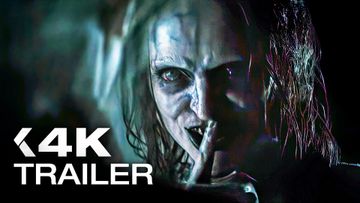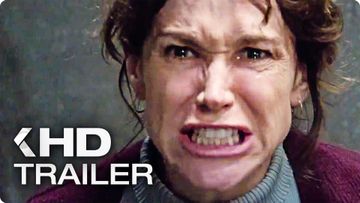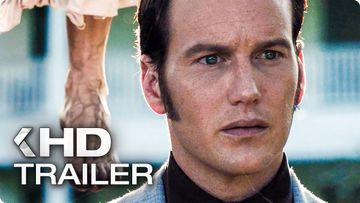Conjuring 5: Prequel to the popular horror series
The Conjuring story is far from over!
The "Conjuring" universe continues to grow: although the fourth part of the popular horror series was advertised as the conclusion with the subtitle "Last Rites", it quickly became clear after its huge success that the story was not yet finished. Now insider Jeff Sneider has announced that a fifth film in the form of a prequel is officially in the works.
The film is set to take place before the events of the series to date and delve deeper into the past of the "Conjuring" universe. The franchise is thus venturing a new start in terms of content without denying its roots. Richard Naing and Ian Goldberg, who were previously responsible for "Conjuring 4" and "The Nun 2", are once again working on the script.
Horror master James Wan is also remaining loyal to the project. Following rumors of financial disagreements between Wan and Warner Bros., an agreement now seems to have been reached. Wan will once again act as producer and thus continue to take over the creative direction of the franchise.
One of the biggest changes concerns the director's position: according to Sneider, French newcomer Rodrigue Huart is in talks. Huart has already attracted attention with a series of short films and is regarded as an up-and-coming talent in the horror scene. As the new film is a prequel, we could possibly get to see the younger versions of Ed and Lorraine Warren. However, whether this is actually the plan remains unconfirmed – no concrete information on the script is currently available.

Why the Conjuring universe is so popular
Few modern horror franchises have had such a lasting impact on audiences as the Conjuring universe. Since the first film "The Conjuring" (2013) by director James Wan, the cinematic universe of paranormal events, demons and exorcisms has become a cultural phenomenon. But why is it that millions of viewers worldwide want to immerse themselves in this dark world time and time again? There are many reasons – ranging from masterful staging and believable characters to a clever combination of reality and myth.
Based on "true" events
A key success factor is the claim that many of the stories are based on real cases of ghost hunters Ed and Lorraine Warren. Although the authenticity of these cases is disputed, this reference to reality provides a special thrill. Viewers experience the films not only as pure fiction, but with the eerie feeling that "it could really have happened". This psychological trick increases the effect of the horror enormously.
Characters with depth
In contrast to many other horror films, in which characters are often just a means to an end, the "Conjuring" universe relies on emotional connection. Ed and Lorraine Warren, played by Patrick Wilson and Vera Farmiga, are not faceless monster hunters, but a loving couple with a moral compass. Their relationship, their faith and their vulnerability make them human and tangible. This creates empathy – an element that makes the horror all the more intense because you feel for the characters.

Classic horror instead of cheap shock effects
James Wan, the creative mind behind the franchise, is a master at building suspense. Instead of bombarding the audience with endless jump scares, he focuses on atmosphere, light, sound and narrative rhythm. Dark corridors, slow tracking shots and subtle sound effects create a feeling of trepidation that lingers for a long time. This type of horror is reminiscent of classic role models such as "The Exorcist" or "Poltergeist" and reminds us that fear begins in the mind – not in the blood.
A networked film universe
The "Conjuring" universe follows a concept that is otherwise more familiar from superhero films: a coherent cinematic universe. In addition to the main films ("The Conjuring" 1-4) , there are spin-offs such as "Annabelle", "The Nun" and "The Curse of La Llorona". All stories are loosely connected and expand the world with new characters and demons. This structure rewards fans who know all the films and at the same time generates curiosity about future stories. The feeling of being part of a larger mythology makes the franchise particularly fascinating.
A mixture of religion, mythology and psychology
The Conjuring universe draws its fear not only from supernatural elements, but also from deeply rooted human themes. Demonic possession, sin, guilt and the battle between good and evil are motifs that have been anchored in religion and culture for centuries. This makes the horror seem archaic, almost spiritual. Faith plays a central role – not only as a weapon against evil, but also as a moral framework. This combination of faith, fear and redemption appeals to people on an emotional level that goes beyond mere horror.
Timeless style and strong imagery
Visually, the franchise impresses with its unmistakable style: dark color palettes, old-fashioned settings and detailed interiors. The 20th century setting – often the 1970s – creates a sense of nostalgia and a certain distance from the present, which intensifies the creepiness. The demons and creatures, such as the nun Valak or the doll Annabelle, have become iconic. Their design is so striking that they have long since become part of pop culture.
Conclusion: more than just horror
The "Conjuring" universe is popular because it offers more than simple shock moments. It combines classic narrative cinema with modern mythology, emotional depth and clever world-building. The films manage to scare, captivate and touch the audience at the same time. At a time when many horror films rely on short-term effects, "The Conjuring" reminds us that true horror originates in the soul – and that is precisely what makes this universe so irresistible.

